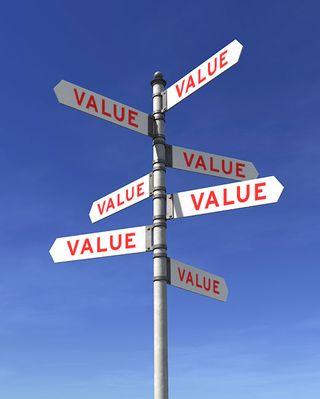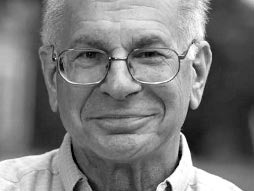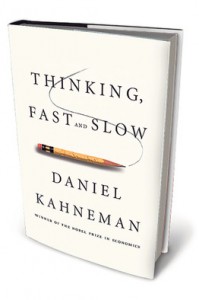Earlier this week, I had the opportunity to present to a
group of recruiting leaders who were gathered in Chicago for the Realty
Alliance conference. Several of the
attendees oversee very high-performing recruiting organizations, so there was
much to share and learn.
One of the topics we addressed was the recruitment
and retention of agents from the “millennial” age group. This group is generally considered those in
the workforce who are currently 18 to 32 years old.
We are starting to hear more chatter on this topic as real
estate companies strive to hire agents who, from an age perspective, are more
reflective of the population at large. I recently read that by 2014, millennials will account for 36% of the American
workforce and will make up 75% of the global workplace in 2025.
So, what is the secret to hiring agents in this age group?
It’s not as complicated as some human resources pundits
would have you believe. For example, I
recently read an article in the Washington Post outlining the “ten things
millennials want from the workplace.”
Here are my five favorites from the list:
1. Not money (ie. It’s
not about the money)2. Goofy perks (like
scooters to get around the halls of the office)3. A focus on social
responsibility (apparently, older generations do not care about social causes…)4. A focus on social
justice and community service (not sure how these are different from social
responsibility)5. A “pass” on doing
stupid things in their personal life (and then posting it on Facebook).
 Maybe the authors just surveyed the Occupy WallStreet crowd
Maybe the authors just surveyed the Occupy WallStreet crowd
to get the data for their article, but it seems surreal to me. We have millennials working for our company,
I have two kids who are millennials, Dave has three kids who are millennials,
and none of them focus on these issues.
I believe it’s safe to assume that if you tried to implement
such advice, you’d quickly twist your organization into a pretzel of
dysfunction. Unfortunately, greater than
90% of the articles I’ve read on millennial hiring over the last couple of
years attempt to highlight the surface (and often silly) differences between
younger and older generations.
Here’s a better idea.
Why not focus on what we know to be true about all human beings and draw
out the similarities between generations?
Also, it is better to focus on core issues that drive human behavior and
engagement.
 A good place to start on collecting this information would
A good place to start on collecting this information would
be the Gallup Organization’s classic Q12 research. Gallup has been working on measuring employee
engagement in organizations for more than 30 years. While they did not specifically focus on
generational differences in this study, there is a surprising similarity among
outcomes across age groups during this 30-year period. You can download a meta-analysis of this
research if you care to read more.
Some media outlets are finally starting to pick up on these similarities
that connect back to more reliable research.
For example, FoxBusiness recently published an article citing a recent
“What Millennials Want From Their Employers” survey. This survey found that millennials want:
1. To do meaningful
work and be part of companies doing meaningful work.2. A career that has
a believable and viable future.3. A mentor—someone
to show them how to be productive and do their best work.4. Community—they
want some of their coworkers to also be their friends.
Do these ideas resonate with what you want from your work
environment? I bet they do. Why? Because they are among the basic things most humans want from their work.
As you might suspect, all four of these themes are
strongly demonstrated in Gallup’s Q12 research, which was originally collected
from mostly baby-boomers and some generation X data sets.
The most important workplace engagement themes ring true
across generations.
Focus on these similarities, and you’ll be much further
ahead. Ignore the articles that
highlight superficial generational differences.
They may be fun to read, but they won’t help you hire more
successfully or coach more effectively.
Join the WorkPuzzle Discussion at the Tidemark Online Community (TMOC)
Engage in the WorkPuzzle discussion by joining the TMOC private social network. Commenting on a public blog like WorkPuzzle can be a little intimidating, so why not join the discussion inside the privacy of the TMOC discussion group?
By joining TMOC, you'll get to see who else is in the group and your comments will only be seen by those whom you trust. Joining TMOC is quick, easy, and free (no kidding…this takes less than 2 minutes). To get started, click here.
Already of a member of TMOC? If so, join the WorkPuzzle Dialog Group by clicking on the WorkPuzzle Group icon on the left side of your TMOC homepage. Questions? Email the WorkPuzzle editor (workpuzzle@hiringcenter.net) and we'll walk through the process.
 Editor's Note: This article was written by Ben Hess. Ben is the Founding Partner and Managing Director of Tidemark, Inc. and a regular contributor to WorkPuzzle.
Editor's Note: This article was written by Ben Hess. Ben is the Founding Partner and Managing Director of Tidemark, Inc. and a regular contributor to WorkPuzzle.














